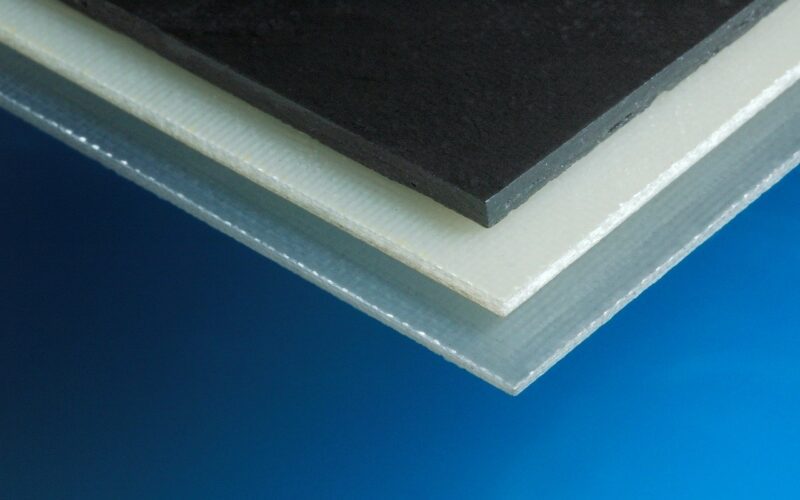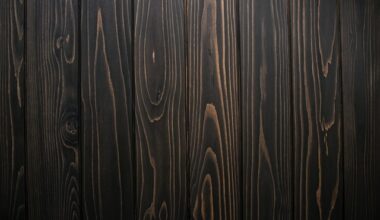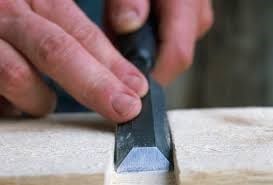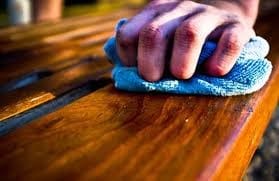Sometimes it so happens that you get wearied of your old furniture. You may even tend to give it a new look and new comfort level. Or maybe, you consider buying simple furniture and giving it an elegant look using DIY tips to avoid breaking the bank.
But at your next step, you get tickled by the question: How to glue upholstery foam to wood?
However, your question is reasonable enough. Gluing foam to wood is not as simple as it might sound. If you follow the nailing and stapling process used to paste upholstery to wood, you’ll definitely be cheated. As it will simply lead to the tear of the foam within a short time frame.
But don’t you worry- this definitive guide will answer your question and curiosity leading you through a step-by-step process to glue upholstery foam to wood.
What Do You Require to Follow This Process?
To follow the question of how to glue upholstery foam to wood, you need to make certain simple arrangements beforehand. Here are the required materials that will help you complete the task seamlessly –
- Sandpaper (80 grit)
- The appropriate adhesive/glue
- A glue gun (optional)
- 2-inch sponge brush
- Upholstery foam
- Wood/wooden furniture
How to Glue Upholstery Foam to Wood?
When it comes to pasting upholstery foam to wood, neither nails, staples nor even metal fasteners are the answer. But it’s glue that is the durable solution. But, before leading you through the steps showing how to do it, let’s explore a couple of other inclusive questions related to the topic.
Picking the Right Glue
Preparing to start the process of gluing upholstery foam to wood, you might often wonder: Which glue is to be used in this case?
This question is essential as not all the glues can give you the desired result. Certain glues may be absorbed by the foam stiffening it consequently. Again, some others can destroy, or even melt the foam.
Hence, it’s crucial to pick the right glue. Here, the most recommendable option is polyurethane construction adhesive. It is specially designed for the binding foam to other things. It is flexible, as well as water-resistant. It’s capable of gifting your furniture a strong binding with upholstery foam.
Out in the market, you’ll find several other options of course that will also suffice in this respect. For instance, you can choose to use spray adhesives or spray foam adhesives, wood glue, hot glue, and gorilla glue.
Which type of glue you should select depends entirely upon certain factors like which type of foam you are using and what level of durability you want. Suppose you want a strong bond between the foam and the wood (especially in the case of furniture). In this case, polyurethane adhesive is the most durable option to get going with. Otherwise, if you use any other option available in the market, at the end of the day you will find out that your foam has gone apart from the wood. That too, in a short timeframe resulting from the pressure.
Preparing Yourself
While you work on this project, always keep in mind that certain glues can be highly toxic. So it is important to take the essential safety measures beforehand. Use a face mask, protective glasses, and gloves during the whole process. Besides, make sure that you work in a clutter-free, well-ventilated place.
How to Glue Upholstery Foam to Wood: Step-by-step Process
Step 1: Sanding
The first step is to prepare the wood surface so that it sticks together with the upholstery foam without any hassle. But it might wonder you why the wooden surface of your furniture needs to be prepared. As you might not know, the surface of the furniture is pretty smooth while upholstery foam is quite porous. So, it may cause an issue to binding the two together if the wood is not rough enough. Sanding will simply create considerable space on the wooden surface for the cement to penetrate.
To follow the process, take 80-grit sandpaper and roughen the wooden surface properly rubbing it in a continuous circular motion. It will make the wood porous thereby promising a stronger bond.
Step 2: Apply the Glue
Now, apply polyurethane construction adhesive on both surfaces (wood and foam) in an even layer. You can consider using a glue gun if you don’t need a very durable binding. However, the most recommendable solution is to use a two-inch sponge brush when you require a strong binding.
After a fine even application of the glue, allow the cement to set for a few minutes. It will ensure that the glue is even stickier for a durable binding.
Step 3: Paste the Surfaces Together
The eventual step for solving the problem of how to glue upholstery foam to wood is to bind the upholstery foam and the wood together. After waiting for the glue to set for a moment, now paste the glue-coated foam on the top of the glue-coated wooden surface.
While following this final step, always be mindful to hold the foam in the appropriate place and shape before you finally lay it on the wood. Because, once you paste it, you can’t undo it. So you might make a costly mistake provided that you are not especially careful at this stage.
Now, hold it in place for a little, and apply even pressure throughout the surface starting from the center and leading towards the margins of the foam. A smart tip here is to use clamps. Clamping will get you an even stronger bond.
And let it dry for six to eight hours approximately. And that’s it! Your new upholstery is ready.
Conclusion
Thus, we’ve seen that following the DIY process is as simple as questioning yourself how to glue upholstery foam to wood. The only things you need are the right glue and some careful moves on your part. Hopefully, you will do the rest efficiently with the help of this guide.
P.S.: Let me emphasize the most crucial points again. Be careful while you choose the upholstery foam and the right adhesive for that. And above all, your safety measures are the utmost priority while you undertake such ventures.








